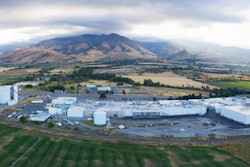Tackling mountains of data is an imposing challenge in today’s food and beverage plant, but another pressing issue is data governance on an enterprise level. Throw in merger and acquisition drivers over the last 20 years, and large companies have been on a journey to unify operating and enterprise platforms, such as Nestle USA’s standardization of its packaging automation platforms.
However, it’s 2017, and multinational companies now want efficiencies—be it supply chain, operational or maintenance. But better decisions by management need consistent data from plant to plant.
At a 2017 ARC advisory panel on the Industrial Internet of Things (IIoT) initiatives in Orlando, Florida, Jim Wetzel, director of engineering of global reliability at General Mills, stressed the need to improve data governance. “It hit me the other day after doing some work with IBM’s Watson and running some maintenance data: garbage in, garbage out is still relevant,” Wetzel said.
Industry veteran Charlie Gifford, senior advanced manufacturing consultant and contributing member of ISA-95 Manufacturing Operations Management Working Group says, “I don’t care if you apply the ISA-95 methods, but you want to apply a governance framework for your system, along with process definitions.
“When I was young and went to a 7-Eleven store, there were 16 Coke and Pepsi choices, maybe,” adds Gifford. “Now you go to any convenience store and you get 250 choices.”
These product choices translate to an SKU explosion across enterprises with equipment, material or repair inventory management.
A recent webinar from Molson Coors examines an initiative to reduce the number of inventory SKUs for multiple maintenance, repair and operations (MROs) divisions and to improve their data governance. This MRO department is in charge of reducing emergency supplies, certifying suppliers, buying material supplies, making decisions about repair versus salvage and maintaining reliability for machines.
“We had SAP — enterprise resource planning (ERP) platform — at the legacy Coors plant and IBM’s Maximo asset management system in legacy Miller plants, but nothing uniform in the way we were doing processes; no uniform data governance,” said Hank Ward, global asset management pillar lead at Molson Coors.
The MRO material master—spare parts—had 300,000 SKUs for eight Molson Coors plants, but no data governance system in place. Independent planners in each of the plants had the ability to create parts and name them what they would like, and then enter them into the system.
“We had to go out and find how many of a certain vendor’s part we’re using across the enterprise,” Ward said. “When you have eight different ways of naming a part, it’s very hard to reconcile that data.”
Molson Coors enlisted Sphera Solutions to reduce the number of SKUs and provide data governance. For the former, the giant beer maker used the Standard Modifier Dictionary to eliminate redundancies from its MRO master data. The software requires MRO master data to use a specialized naming system to ensure that naming protocols are consistent across the enterprise.
Molson Coors was able to remove more than 70,000 SKUs and reduce the number to 223,000 for the eight plants that make up the North American enterprise.
For the data governance, Molson Coors is using the Sphera Solutions software as a service (SaaS) structure tool that enforces rules and best practices necessary for creating and maintaining standardized and comprehensive MRO item descriptions, but also integrates to existing ERP and asset management systems.
This provides unified data consistency and optimizes the MRO supply chain. “The structure tool manages workflow requests related to new items, changes to the catalog and enhances the search function within SAP,” Ward said.
The first part of the North American MRO project—SKU redundancies—took nine months, while the ERP and asset management integration are still ongoing. “Coming later this year and into next year, we’re going to map and optimize the legacy Miller MRO materials to our Molson’s classification taxonomy,” Ward stated.
Ward justified the spend on this project by attaching it to another enterprise asset management project. “We were implementing SAP,” he explained, “and it was easy to justify and sell the idea of having good data for the new ERP system.”






















